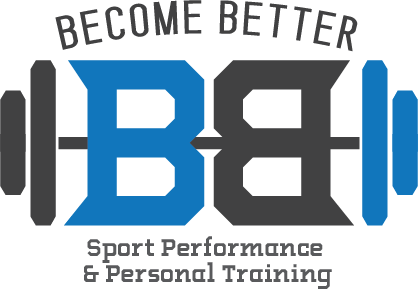What is RPE and Why is it Useful?
If you’ve been exercising for awhile you are probably somewhat familiar with RPE, but you may still have some questions about it. If you are new to exercising, you may have never heard of RPE. Either way, this article will clear up any questions you may have. By the end, you’ll know exactly what RPE is, how to use it, why we use it at Become Better SPPT, and how including it into your training can be very beneficial.
RPE stands for “Rating of Perceived Exertion”. This is just a fancy way of saying “How easy or hard did that feel?” What this rating does is allows you to quantify the level of effort required to perform every exercise. It gives you a data point that you can track from week to week to assess progress outside of simply adding weight or adding reps to an exercise. For example, if you squat 135lbs for 5 reps one week and it felt like a maximal effort set and then the following week you squat 135x5 again and it feels much easier, you know that you’ve gotten stronger. It is also a great communication tool between you and your trainer. Your feedback on how hard something feels allows us to create a better plan for the following workouts.
In strength training, RPE is rated on a 1-10 scale with the most frequently used numbers ranging from 6-10. The numbers 1-5 are rarely used because it can be tough to differentiate between them. For our purposes, if something is so easy that it could be rated somewhere between 1-5 it can simply be referred to as “<6”. The numbers 6-10 correspond well with reps in reserve. The number 10 represents a maximal effort set, meaning you either couldn’t have successfully done any more reps or you hit failure before you completed your set. If you couldn’t do any more reps on your own or required assistance from a spotter to finish the set, by definition this is a 10 RPE. The number 9 means you likely could have done 1 more rep before hitting failure, the number 8 means you could have done 2 more, 7 means 3 more, and 6 means 4 more. These ratings hold true regardless of how many reps you do. It doesn’t matter if you perform a lighter set of eight reps or a heavier set of three reps; if you feel like you had 2 reps left in the tank, the sets are both an 8 RPE.
RPE can also be used to prescribe loads. If you see sets, reps, and an RPE listed on your sheet but no weight, that means you’re supposed to work up slowly until you hit a weight that feels like the correct RPE level. RPE also gives you the freedom to adjust weights when necessary. If you know you’re supposed to be working at a 9 RPE but the weight you’re lifting feels like a 7, you should let your trainer know and add some weight. This works in reverse as well; if you’re supposed to be working at an 8 RPE but the weight you’re lifting feels like a 10, you should consult your trainer and adjust the weight down as necessary.
RPE is a very beneficial tool that should be incorporated into any strength/fitness program. Making use of it can help you get more out of your workouts and it can also improve the level of communication between you and your trainer. If you’re not already recording your RPE values, start today!

